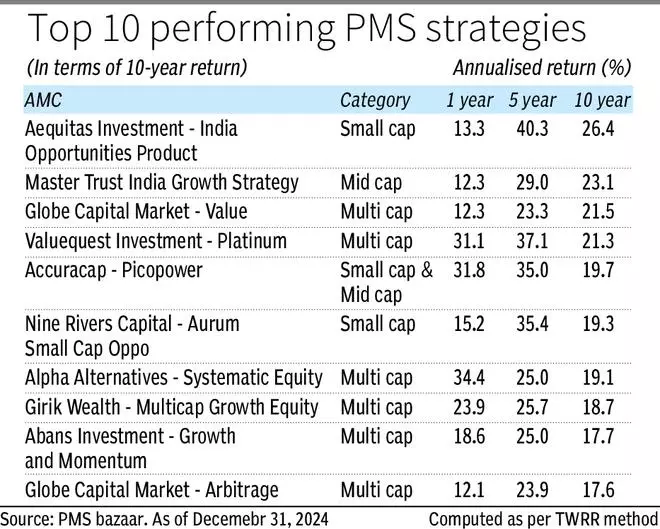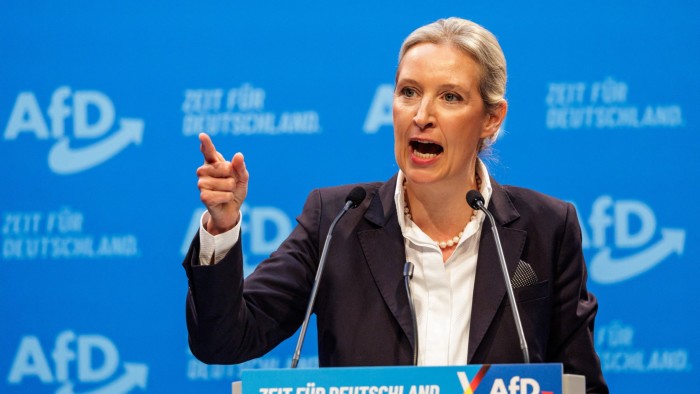Like mutual funds, Portfolio Management Service (PMS) has also become a popular investment vehicle among investors in higher income brackets. The PMS industry added 1.44 lakh clients over the previous 10 years, reaching 1.9 lakh as of November 30, 2024. Their assets under management (AUM), too, have grown manifold to ₹7.5 lakh crore from ₹62,217 crore in November 2014.
PMS offers personalised investment solutions and active portfolio management to high net-worth individuals, family offices, corporate/institutional clients.
The minimum ticket amount in PMS is ₹50 lakh; however, an investor can begin investing in mutual fund schemes with as little as ₹100. The PMS portfolios are called strategies that are similar to that of the mutual fund schemes. Investors get to choose from the various strategies available with different PMS. The portfolio of each strategy that an investor puts money in is held in a separate demat account.
PMS can be categorised as discretionary and non-discretionary, based on the level of control that the portfolio manager holds. In discretionary, the client provides the PMS manager the ‘Power of Attorney’ to execute transactions in the demat account on his/her behalf. Under non-discretionary PMS, transactions can be executed only after approval from the client.
Multiple cost structures
In India, PMS is offered with three cost structures – fixed only, profit sharing only and hybrid fee. In fixed fee structure, the investor has to pay a fixed percentage periodically that ranges from 0.25 per cent to 2.5 per cent. The profit-sharing option is structured as a percentage of profits generated by the portfolio in excess of a specified hurdle rate. The hurdle rate is the minimum rate of return a portfolio must achieve before the fund manager can charge a performance fee. In the case of hybrid-fee option, the portfolio managers charge both fixed and profit-sharing fees.
As per a PMS Bazaar study, about 53 per cent of the strategies provide investors with all three fee alternatives. About 29 per cent of strategies offer only the hybrid option, while 17 per cent offer fixed-only and 2 per cent profit-sharing only fee options.
Tailored strategies
Unlike mutual funds with a standard categorisation, PMS goes beyond one-size-fits-all solutions and customises investment strategies to offer each person a unique and personalised investment solution. In PMS, you gain direct ownership of securities in your portfolio that allows investors to make informed decisions about the investments.
PMS enjoys flexible investment approaches. For instance, mutual funds cannot take more than 10 per cent exposure to one stock. There is no such restriction for PMS. Some PMS schemes hold even 20-30 per cent in a single stock.
MF scores over PMS, in terms of taxes
In mutual funds, the fund manager engages in a number of transactions in an equity mutual fund. Unitholders do not have to pay tax for this, though. They only have to pay taxes when they redeem money from the fund.
Meanwhile, PMS trades stocks from an investor’s demat account. So, the investor bears transaction costs and short- and long-term capital gains, which leads to much higher expenses that can eat into the returns.
Performance
Each PMS strategy follows a different approach to investing. As per PMS Bazaar, the PMS strategies are classified into 14 categories. The equity strategies are further classified as large-cap, large-&mid-cap, mid-cap, small-cap, small-0&mid-cap, flexi-cap, sector and thematic funds. The other categories include multi-asset funds, debt and arbitrage funds.
As per the data, currently there are 438 PMS strategies available in the market. Of these, 62 have a 10-year track record. On an average, PMS funds have delivered a 15 per cent annualised return (CAGR) in the past 10 years up to December 31, 2024, surpassing the Nifty 50 TRI which delivered 12.4 per cent returns in the same period.







Leave a Comment